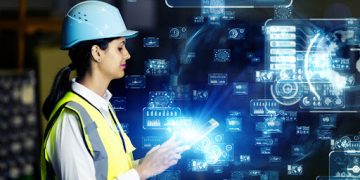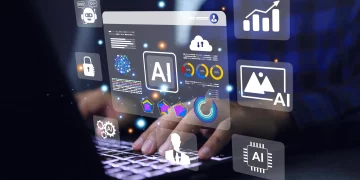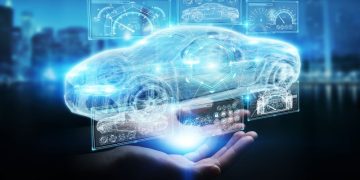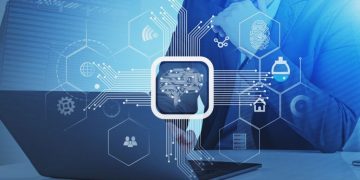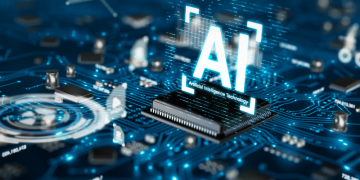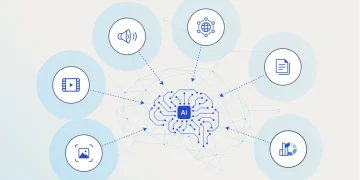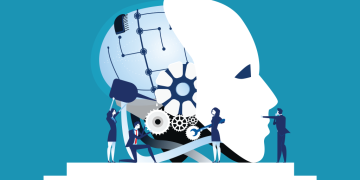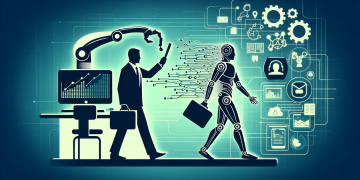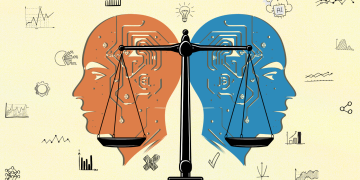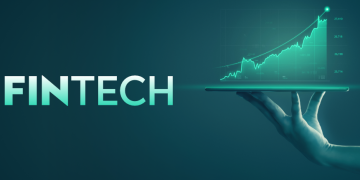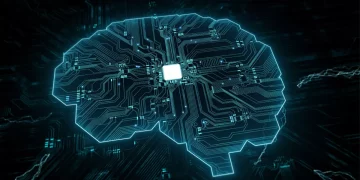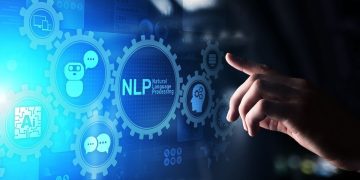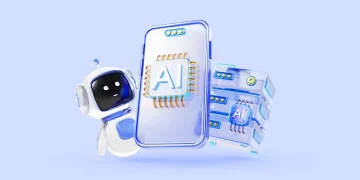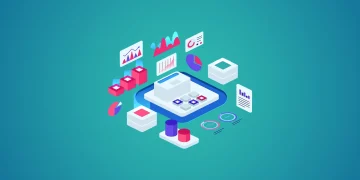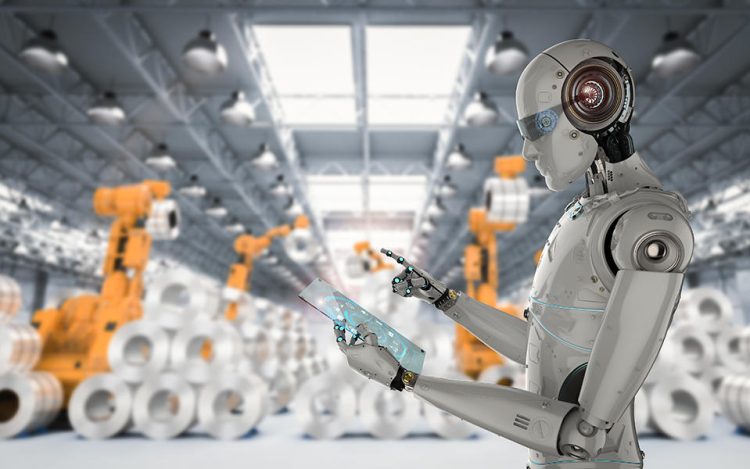The rise of Artificial Intelligence (AI) has been transformative across nearly every sector, reshaping business operations and creating new opportunities for innovation. However, for traditional industries—such as manufacturing, retail, and logistics—the adoption of AI presents both immense promise and significant challenges. These sectors, many of which have been entrenched in legacy systems for decades, must navigate a complex journey of digital transformation to fully leverage the benefits that AI offers.
This article will examine how AI is influencing traditional industries, exploring the benefits and challenges of implementing AI-driven solutions. Experts from various sectors, including manufacturing, retail, and logistics, will provide insights into the practicalities of adopting AI and the necessary steps to integrate these technologies into legacy business models. We will also discuss the impact of AI on workforce transition and how these industries can adapt to the changing landscape.
The Growing Role of AI in Legacy Industries
Traditional industries, including manufacturing, retail, and logistics, have been relatively slow to adopt AI compared to the tech and finance sectors. This is partly due to the reliance on legacy systems that have long supported these industries and the initial resistance to change. However, the potential benefits of AI are becoming impossible to ignore, especially as businesses face increasing pressure to improve operational efficiency, reduce costs, and meet rising customer expectations.
AI is playing an increasingly critical role in automating repetitive tasks, improving decision-making, and providing businesses with the tools they need to enhance their overall competitiveness. In manufacturing, AI is being used to optimize production schedules, predict equipment failures, and ensure quality control. In retail, AI is transforming customer experience by personalizing product recommendations, optimizing inventory, and improving demand forecasting. Logistics companies are using AI to streamline supply chain management, optimize delivery routes, and improve customer service.
While the benefits of AI are clear, the integration of AI into legacy systems requires a comprehensive strategy to overcome obstacles, such as the modernization of infrastructure, training the workforce, and addressing regulatory concerns.
Overcoming Challenges in Digital Transformation
The journey toward AI adoption in traditional industries is not without challenges. Legacy systems, often built on decades-old technologies, present a significant barrier to the smooth integration of AI. Many businesses are reluctant to overhaul their infrastructure because it can be costly and disruptive. Additionally, many companies have limited experience with digital transformation, which complicates the adoption of new technologies.
Data Integration and Infrastructure Modernization
One of the biggest obstacles to AI adoption is the need for data integration. AI thrives on data, and legacy businesses often struggle with siloed data systems, poor data quality, and outdated infrastructure. To fully leverage AI, companies must invest in modernizing their infrastructure and adopting data management practices that can ensure the availability, accuracy, and consistency of data across their operations.
In the manufacturing sector, for example, legacy machines and sensors might not be able to communicate with newer AI systems, making it difficult to gather real-time data. This lack of integration can prevent AI from being fully utilized in predictive maintenance and production optimization. Companies must invest in smart sensors, IoT technologies, and cloud-based solutions to bridge the gap between legacy systems and AI capabilities.
Workforce Transition and Reskilling
Another significant challenge is the workforce transition. AI adoption often requires employees to adapt to new roles and develop new skills. The automation of repetitive tasks raises concerns about job displacement, but experts argue that the integration of AI into traditional industries will result in the creation of new jobs that require advanced skills. In particular, workers will need to reskill and upskill to manage AI-driven tools, analyze data, and implement AI solutions.
In manufacturing, AI can automate the repetitive tasks associated with assembly lines, but workers will still be needed to operate and maintain advanced robots, AI systems, and data platforms. Similarly, in logistics, AI can optimize route planning and inventory management, but human oversight will still be necessary to ensure that systems are running smoothly and decisions are being made with the right context.
Industry experts emphasize that reskilling and workforce development are crucial for businesses to successfully integrate AI into their operations. Companies must invest in training programs and partnerships with educational institutions to ensure that workers have the skills needed to thrive in an AI-powered world.
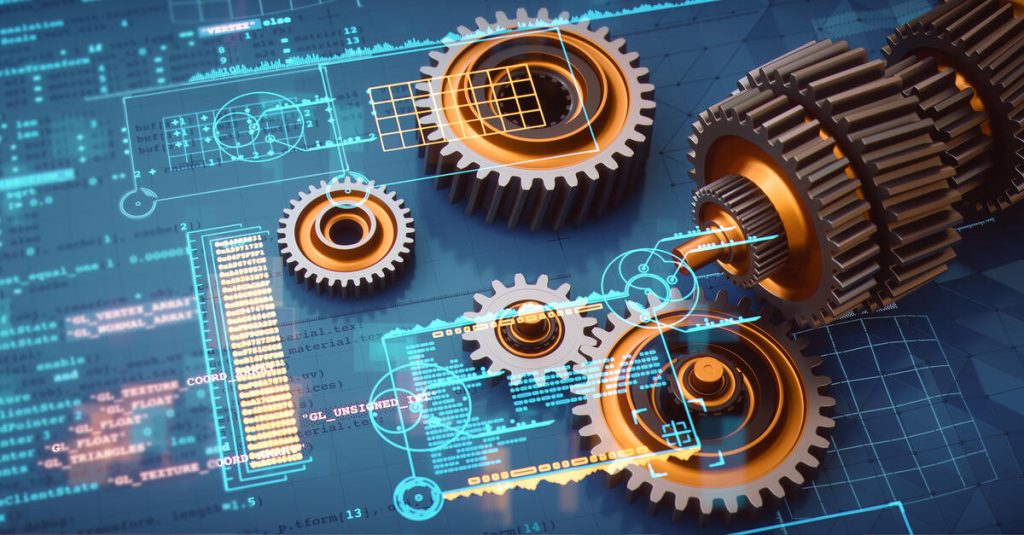
AI in Manufacturing: Transforming Production Lines and Supply Chains
Manufacturing has long been a sector reliant on traditional processes and machinery. However, as competition intensifies and the demand for higher-quality products increases, AI technologies are becoming more widely adopted in manufacturing settings.
AI applications in manufacturing include predictive maintenance, process optimization, and supply chain management. Predictive maintenance, powered by AI, allows manufacturers to monitor equipment in real-time, predict potential failures, and schedule maintenance before critical breakdowns occur. This helps reduce downtime and increases the efficiency of production lines.
In supply chain management, AI plays a key role in optimizing inventory levels, forecasting demand, and streamlining logistics operations. AI-driven predictive analytics can analyze vast amounts of data from suppliers, customers, and market trends to improve decision-making and reduce costs. Manufacturers that adopt AI-powered supply chain solutions can better respond to fluctuations in demand and ensure that products are delivered in a timely and cost-effective manner.
Additionally, AI is being used to optimize product designs and reduce waste. Machine learning algorithms can analyze production data to identify inefficiencies in manufacturing processes and suggest improvements to reduce material waste and energy consumption.
Expert Insight: “AI in manufacturing is transforming how we approach production lines, turning them into dynamic, data-driven systems that can adapt and optimize on the fly,” says Dr. Marcus Reid, a manufacturing AI expert. “With predictive maintenance and real-time process optimization, manufacturers can drastically reduce downtime and improve productivity.”
AI in Retail: Enhancing Customer Experience and Operational Efficiency
Retail is another sector that is undergoing a significant transformation as AI technologies are integrated into customer experience and operations. Retailers are using AI to analyze customer behavior, personalize shopping experiences, and optimize inventory management.
In e-commerce, AI-powered recommendation engines provide customers with personalized product suggestions based on their browsing history, purchase behavior, and preferences. These recommendations not only improve customer satisfaction but also increase sales by offering relevant products to shoppers.
AI is also helping retailers optimize inventory levels and streamline logistics. Machine learning models can predict demand fluctuations and adjust inventory accordingly, preventing stockouts or overstocking. AI algorithms can also optimize pricing strategies in real-time, ensuring that prices are competitive while maximizing profitability.
In brick-and-mortar stores, AI is used to enhance the in-store shopping experience through smart kiosks, virtual assistants, and automated checkout systems. By leveraging AI-powered tools, retailers can improve operational efficiency and create a more seamless customer experience.
Expert Insight: “Retailers who adopt AI are not only improving their operational efficiency but also creating more personalized, engaging experiences for their customers,” explains Sarah Williams, a retail technology expert. “AI is enabling businesses to understand their customers better and anticipate their needs, which is key to staying competitive in today’s market.”
AI in Logistics: Streamlining Operations and Improving Delivery Efficiency
Logistics and supply chain management have traditionally been data-intensive and operationally complex. However, the integration of AI is helping logistics companies optimize their operations, reduce costs, and improve service delivery.
AI applications in logistics include route optimization, demand forecasting, and warehouse automation. Machine learning algorithms can analyze traffic patterns, weather conditions, and historical data to optimize delivery routes, reducing fuel consumption and delivery times. AI-powered demand forecasting models help logistics companies predict peak periods and adjust staffing levels, ensuring that resources are allocated efficiently.
Warehouse automation powered by AI enables faster sorting, packing, and inventory management. Robots equipped with AI can navigate warehouses, locate items, and even collaborate with human workers to enhance operational efficiency. AI-driven automation reduces the need for manual labor, cuts down on errors, and speeds up fulfillment processes.
Expert Insight: “AI is not just about optimizing routes—it’s about transforming logistics operations into fully integrated, intelligent systems that respond dynamically to changing conditions,” says Tom Blake, a logistics AI strategist. “The future of logistics is about leveraging AI to improve every aspect of the supply chain, from warehouse management to last-mile delivery.”
Conclusion: Navigating the Roadmap for Digital Transformation
For legacy businesses in manufacturing, retail, and logistics, the road to AI adoption is paved with challenges. However, the potential benefits are immense, and companies that embrace digital transformation will be better positioned to thrive in a rapidly changing marketplace.
To successfully integrate AI, businesses must focus on overcoming infrastructure and data integration challenges, investing in workforce reskilling, and ensuring that AI solutions align with their broader business objectives. AI has the potential to optimize operations, improve customer experiences, and drive innovation across traditional industries, but successful implementation requires strategic planning, collaboration, and ongoing adaptation.
The future of AI in legacy industries is not a matter of “if” but “when.” By taking a proactive approach to AI adoption, traditional businesses can unlock new growth opportunities and gain a competitive edge in the digital era.

